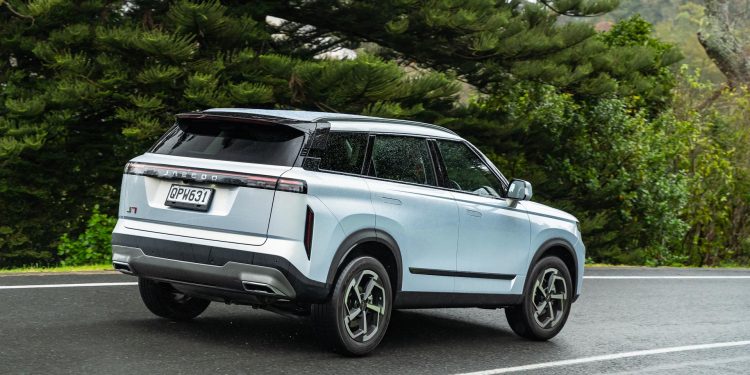2024 Jaecoo J7 EX review
Words: Peter Louisson | Photos: Isaac Western
First Chery released its Omoda range here, and now it is joined by Jaecoo with a slightly different take on things. We drive the J7.
Sometimes we get to drive a vehicle that arrives in the country before a media or public launch is held. Such is the case for the Jaecoo brand, essentially a sister company to Omoda, both from Chinese car maker Chery.
The concept is that Jaecoo is the ‘urban off-road SUV’ alternative to Omoda. Jaecoo, by the by, is a blend of two words, ‘jager’ from German meaning hunter, and ‘cool’.
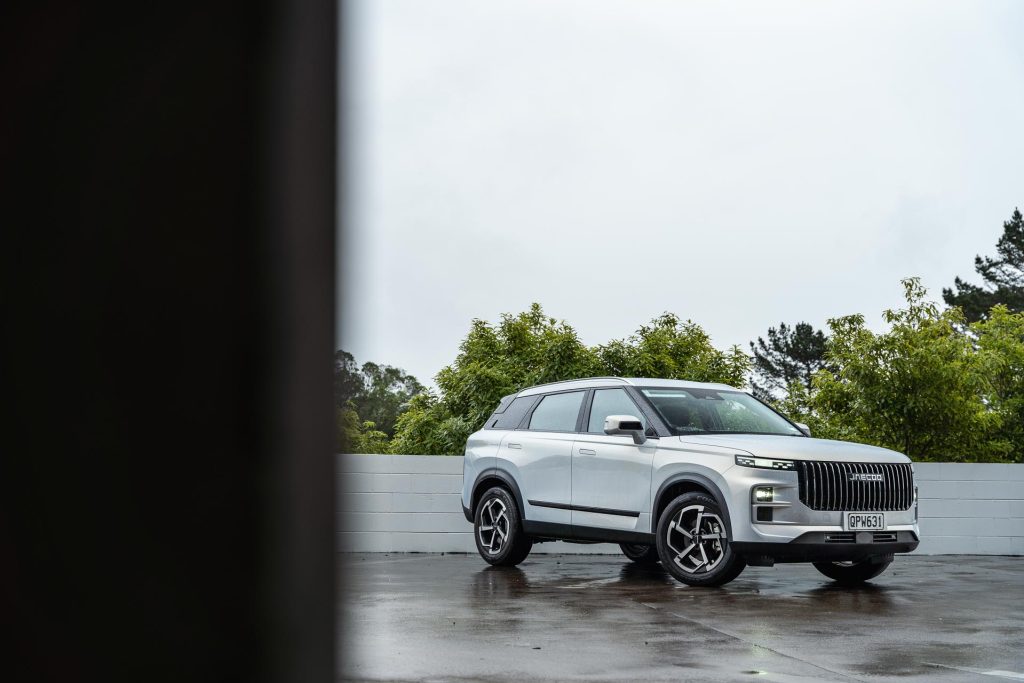
Where Omoda (such as the E5) is aimed more at younger tech-savvy customers, Jaecoo is for more mature buyers with safer styling and more of a focus on luxury and off-road competence.
Colour us surprised then that the first vehicle sampled from the Jaecoo line-up, the J7, is front-wheel drive with no off-road modes. With road rubber, there are no off-roading pretensions here, apart perhaps from 200mm of GC.
Ater requesting a spec sheet it quickly became evident that there are two J7 models, one with AWD. That would be the EX+ model, that has some dedicated off-road modes.
However, the EX model we drove doesn’t – it just has the regular Normal and Sport modes along with an Ee-Cee-Oh mode – the hired help tells you which mode you’re shifting to – which we know better as Eco.
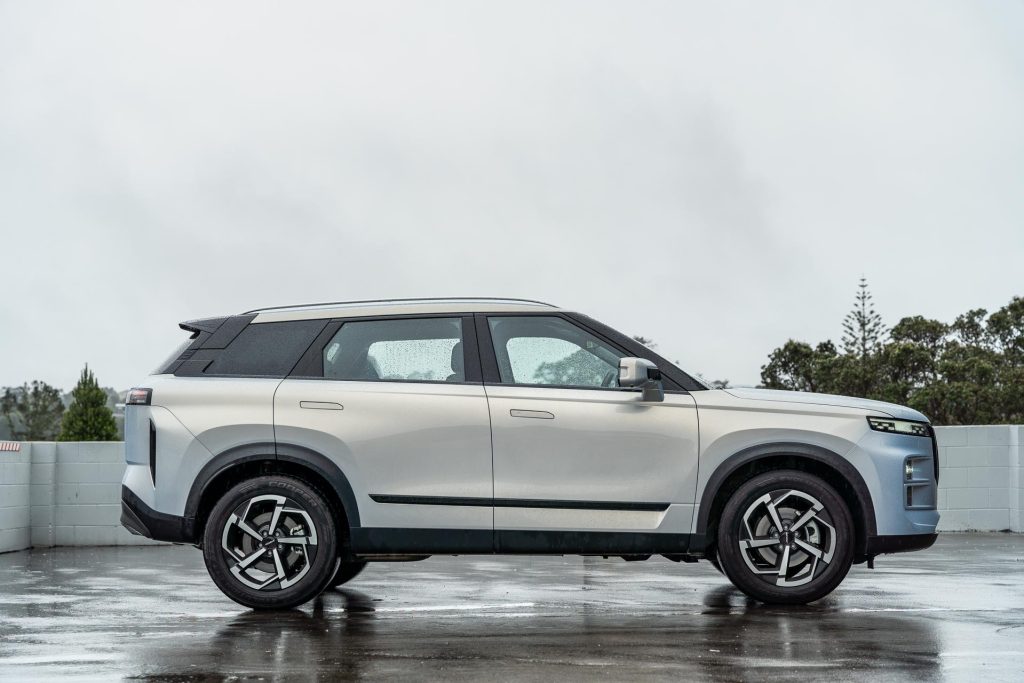
Turbopetrol power and DCT
So let’s just park the AWD model up for the moment and concentrate on the EX front driver, which is presumably the one that will kick off at a sub $40k price point.
We know at least one of them does because the teaser campaign suggests as much. We will learn the actual price just after the magazine goes to print so in the meantime let’s see what we do know for sure about the Jaecoo J7.
Under the EX hood is a 1.6L turbopetrol that drives the front wheels through a seven-speed dual-clutch transmission.
Advanced driver-assistance systems (ADAS) include AEB that detects vehicles, pedestrians and cyclists, adaptive cruise with lane keeping and traffic jam assist, forward collision warning, and traffic sign recognition. Pretty much all cars have these features nowadays to pass five-star safety tests.
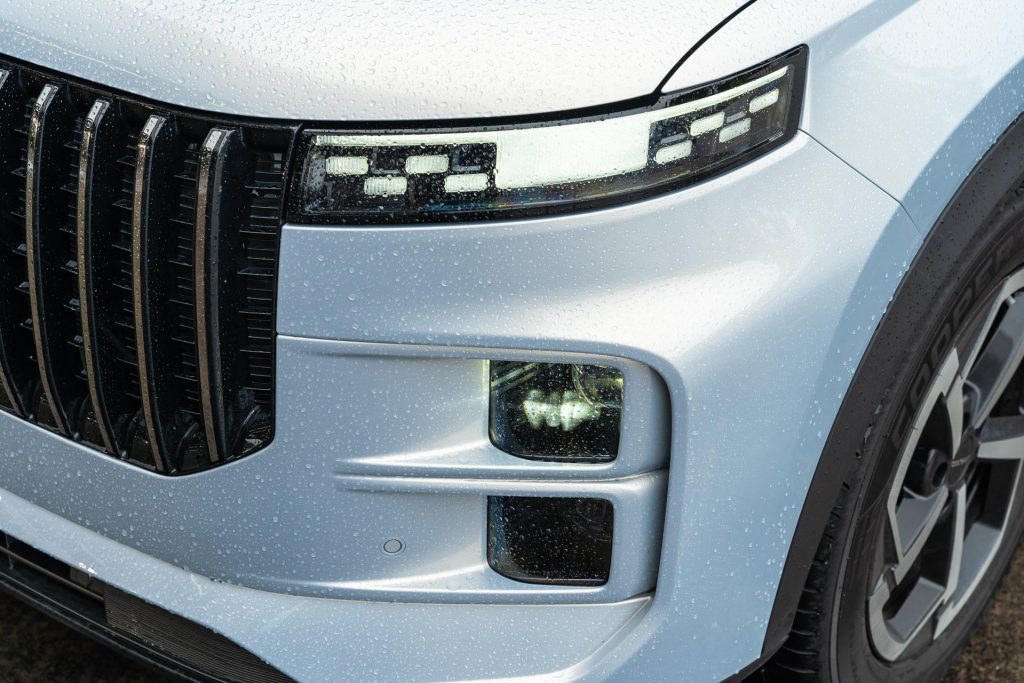
And while the J7 has yet to undergo ANCAP testing, its sister Omoda SUVs have a five-star rating. J7 also has a Monash University five-star tick of approval.
Other key specification items include leather-like seat coverings for the powered and heated seats, a wireless charger, dual zone air, a powered tailgate, a panoramic sunroof, and heated external mirrors.
An unusual feature for a non-EV is flush-mount door handles that extend for ease of entry, retract thereafter.
What else do we know about J7?
While it has a wheelbase of 2672mm and overall length of 4500mm, that puts it at the more compact end of the medium SUV segment, a point that is confirmed by its 410L luggage capacity when all five seats are in use.
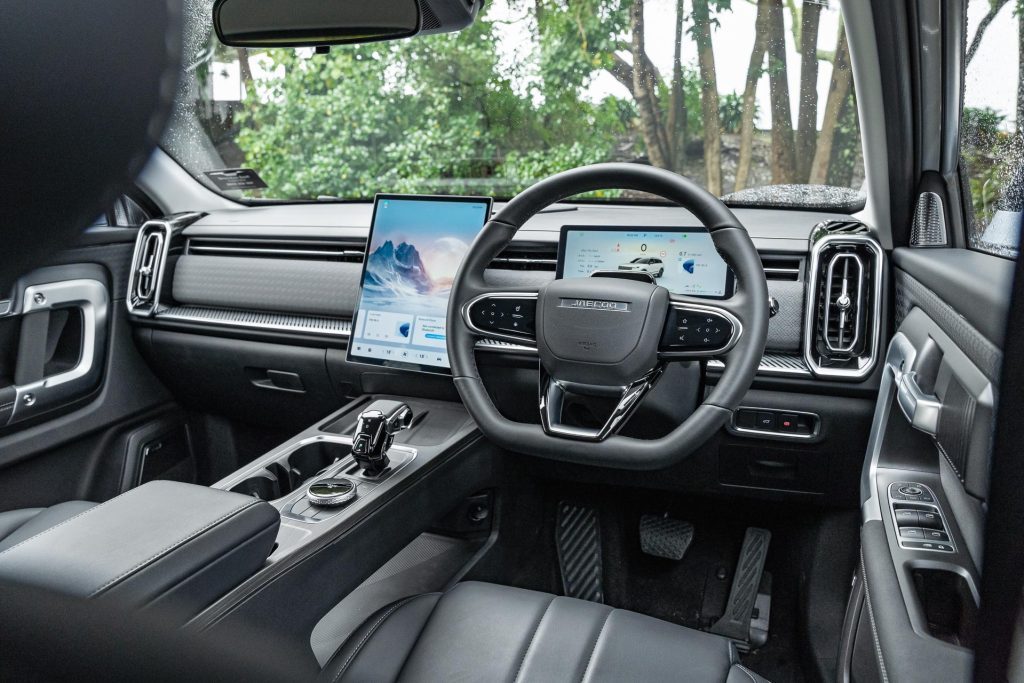
Ditch the rear ones and there’s 1254 litres available. Some folk don’t want the larger style medium crossovers because of garage size or parking concerns.
The more offerings in the transition zone between medium and compact offerings, the better.
Upfront is an ICE engine, the turbo 1.6 good for 137kW at 5500rpm and 275Nm from 2000-4000rpm. A WLTP fuel use figure of 7.0L/100km is claimed but rightcar counters with 7.8.
After we eventually found the trip readout (shared with the ACC controls) it was typically in the mid-eights, though sometimes high sevens. Fuel use overall for this tester was registering 9.4L/100km but that’s a whole of life reading.
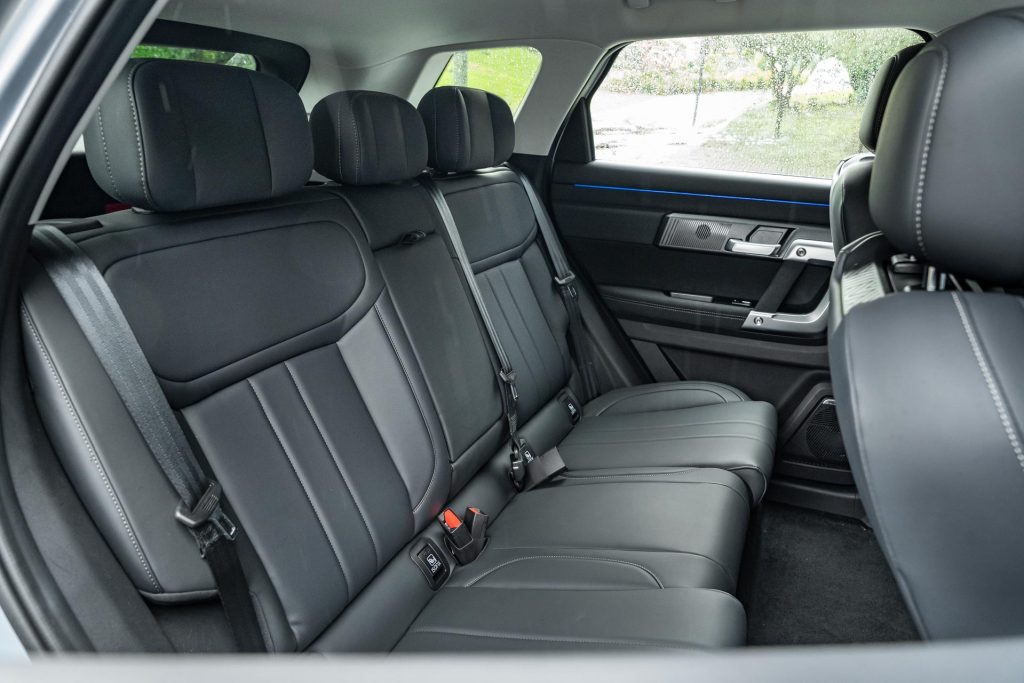
It weighs 1563kg in 2WD format, and is another 100kg heavier as an all-paw contender.
Overseas publications suggest a sprint time of 8.0sec – seems right as we saw 7.9sec – while a passing manoeuvre takes five and a half seconds or 158m.
We couldn’t better 37.89m for the emergency stopping distance from 100km/h. For the record, it runs Coopertires, a brand we’ve not encountered before. The Evolution CTT tyre size is 235/55R18.
Reminds of a mix of things
In a design sense, this is indeed more conservative than the Omoda offerings but looks enticing with its Rangie cues, the roofline and side windows remind me of Evoque. Nipped and tucked overhangs impart a pleasing profile.
The cabin takes plenty of ideas from its Omoda close relatives. Some of the design features, like the gear lever, seem overly ornate given all it does is select R, D or N.
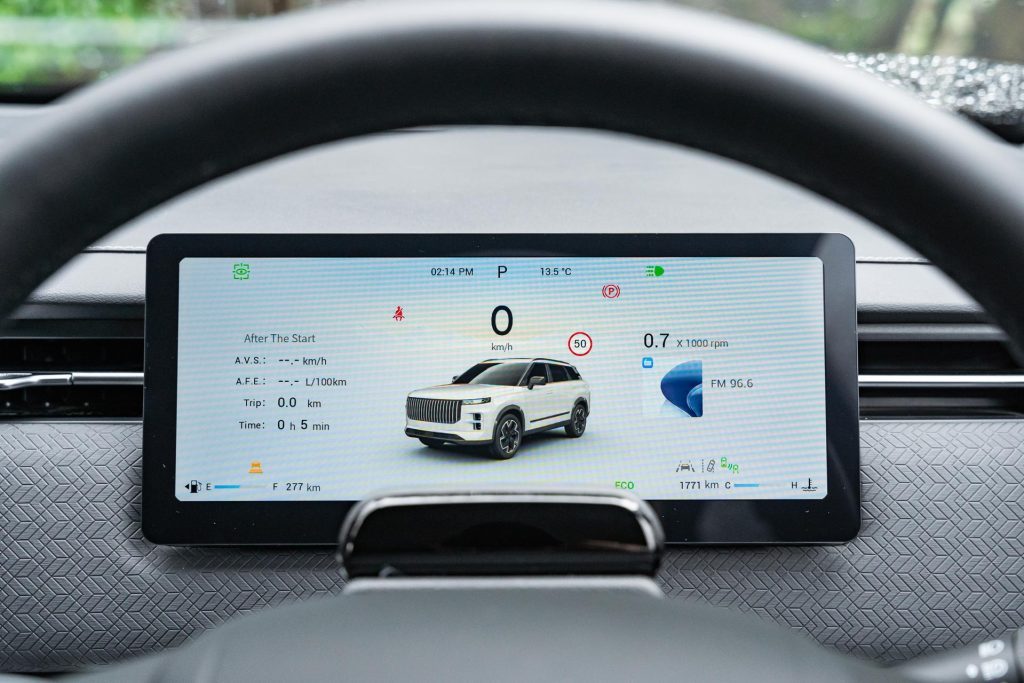
However, in the AWD model it may do more, like manual sequential shifting. Certainly that’s what the plus and minus signs would suggest.
There are some nice finishings across the dash, and up front beneath the windscreen there’s a leather look to the soft-touch plastics.
The portrait-style screen is impressive too, and this controls pretty much the whole shooting match, drive modes aside.
There’s nothing too annoying about the central screen, other than the usual distraction factor; there’s a camera aimed straight at you that monitors eye movement.
We didn’t try to cancel this and don’t think you can anyway, only driver fatigue. Of note, you can’t turn off ESP or TC in this, or if you can I certainly couldn’t discover where or how this was done.
So what’s it like precisely?
On the go, this is quite feisty as you might expect of a 1.6T, beavering away nicely at low revs so it feels easygoing in day to day running. Select Sport and it’s even more responsive but we doubt many will find it necessary.
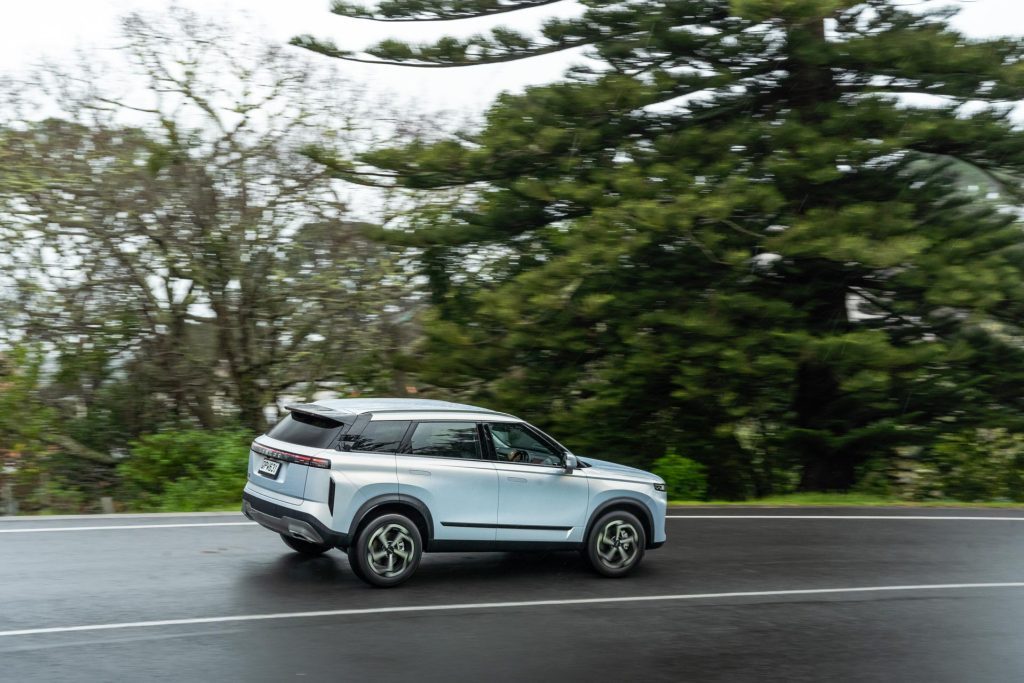
About the one performance-related issue we noted was hesitation off the mark. We’ve encountered this before in vehicles with stop/start systems, twin-clutch transmissions and turbo-fired engines.
All the little hesitations add up when you’re stopped waiting at the lights. So you need to be aware of what’s going on and not checking txt messages when the lights go green.
On the go, the ride is well sorted, even at town speeds, and noise levels are good too, in part due to the use of hush glass. Dynamically this works effectively enough, though ride comfort really takes precedence.
We noted a little torque steer at times, and the front wheels can break loose on occasion, even in the dry. The brake pedal and steering wheel aren’t exactly brimming with feel and if that’s the intention then they’ve done well.
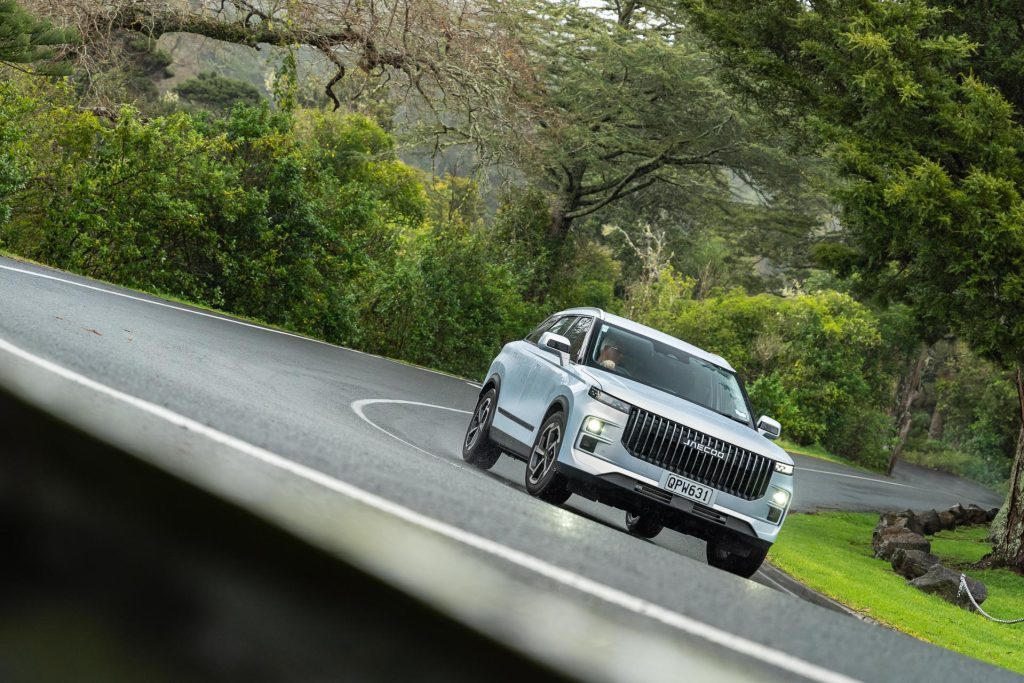
On the practicality front we appreciate the fact this centrally unlocks on your approach, and relocks as you depart, a feature we’re encountering increasingly.
Works for me, as you’re never wondering whether you forgot to lock up after leaving the vehicle. The self presenting door handles that disappear when locked confirm the system works, although there’s also an audible beep.
Pity the indicators don’t make more noise; they’re almost inaudible. That said, we also complain when they’re too loud and sound horrible.
Nice touches include the 360-degree camera that flicks on when you’re turning right or left, and the ease of saving favourite radio channels.
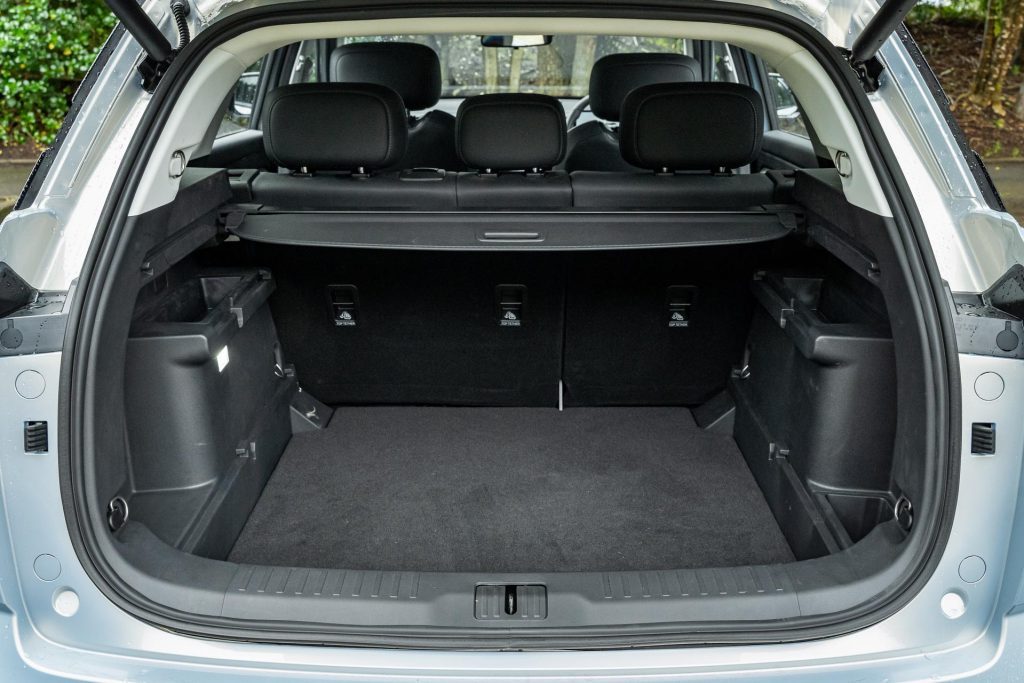
Value packaging
Summing up without knowing the asking price is somewhat difficult but like Omoda expect it to be sharp. We do know that the EX+AWD variant comes with a higher price tag (again unknown, we suspect in the early $40k area), and with extra specification.
That includes privacy glass, seat ventilation, memories and adjustable lumbar support for the driver, a heated wheel, antiglare interior mirror, and a larger 14.8-inch touchscreen. It also scores a head-up display, dash cam recorder, and front fog and welcome lights.
If the EX model arrives around the mid-$30k area it should prove interesting for those who might be shopping a class smaller for similar money, especially given its seven-year warranty and seven years of AA roadside assistance.
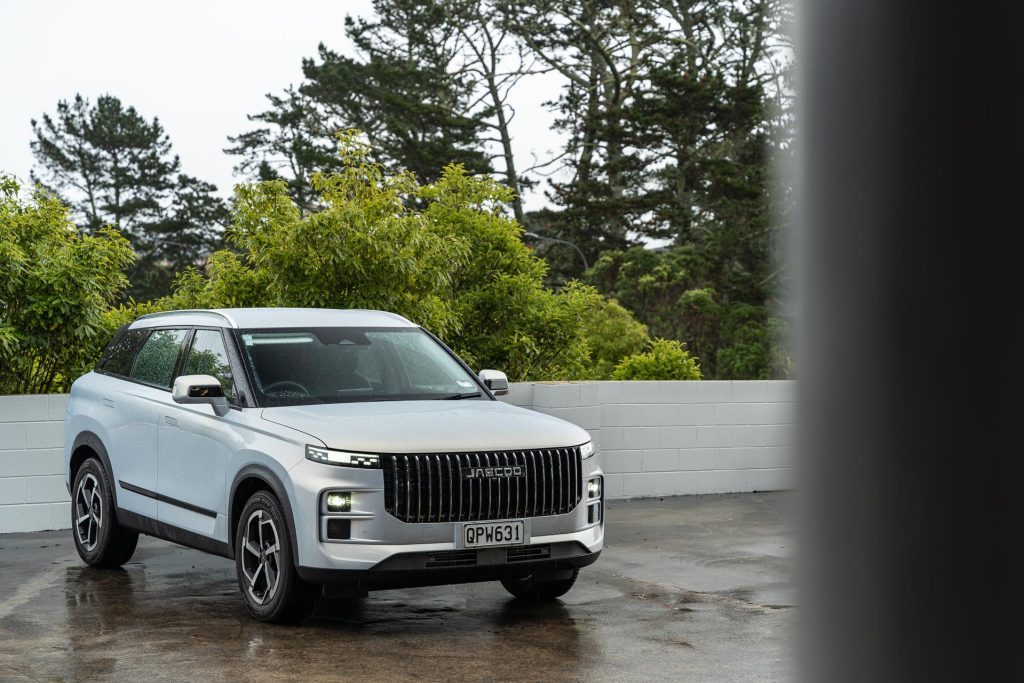
What about future additions to the range? Australia is taking a 1.5L PHEV variant of the J7 at some point, so we’d guess this is due here in the not-too-distant future as well.
Over there the brand will not be sold in the same showrooms as the Omoda models.
Whether or not it’s the same here will be answered soon. As will the question of whether or not the small electric J6 and the larger PHEV J8 are coming.
All await the Jaecoo announcement at the end of the month.
| Model | Jaecoo J7 EX |
| Price | $37,990 |
| Engine | 1599cc / IL4 / T / DI |
| Power | 137kW@5500rpm |
| Torque | 275Nm@2000-4000rpm |
| Drivetrain | 7-speed twin-clutch / FWD |
| Fuel Use | 7.8L/100km |
| C02 Output | 181g/km |
| 0-100km/h | 7.89sec |
| 80-120km/h | 5.48sec (158.12m) |
| 100-0km/h | 37.89m |
| Stability systems | ABS, ESP |
| Safety | AEB, ACC, BSM, LDW, RCTA, ALK, AHB |
| Luggage Capacity | 51L |
| Tow rating | N.A |
| Fuel Capacity | 51L |
| Service intervals | 12 month/15,000 km |
| Warranty | 7 years/unlimited km |
| ANCAP rating | Not rated |
| Weight | 1563kg (claimed) |
This story first appeared in the August 2024 issue of NZ Autocar magazine.


